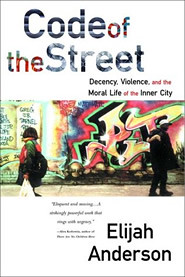Robberies in Northeast DC and the Code of the Streets: Bad people pay attention and watch
 Yesterday's Post reports ("D.C. burglaries increase in Brookland, Michigan Park") that "new residents" are concerned about a rise in burglaries that seem to be based on an understanding of when residents are not home.
Yesterday's Post reports ("D.C. burglaries increase in Brookland, Michigan Park") that "new residents" are concerned about a rise in burglaries that seem to be based on an understanding of when residents are not home.I have all kinds of experiences of this kind related to when I lived in the H Street neighborhood. I wrote about it a bunch over the years. And here:
-- Revitalizing places that are contested spaces
-- Historic preservation in low income neighborhoods
-- More on unaffordable housing (Yes, gentrification is part of the program in DC)
-- Community Preservation and Development
-- One reason why I think the Gentrification word is over- and mis-used
-- Does change mean gentrification? Categorically?.
My joke is that when I moved to "the city" I was young (well, 27 years old) and dumb.
It wasn't until 2001 that I read the book Code of the Streets by Elijah Anderson.
Afterwards I joked that it's too bad I hadn't read such a book before I moved to the city, so that I could have been much better educated and prepared for what I was about to get into.
Other than moving my wallet from my back pocket to my side pocket to reduce the likelihood of pick pocketing, and not using ATMs or buying gasoline at night, I didn't do enough to harden my behavior to protect me from crime.
But today's residents have the advantage of being able to read Code of the Streets or even the "Code of the Streets" article by Anderson from The Atlantic Magazine circa 1994.
Also see this op-ed by Elijah Anderson, "Code of the street is keeping crime alive," from April 2005 in the Philadelphia Inquirer. (No longer available online.) From the op-ed:
In the code of the street, a set of informal rules governs interpersonal public behavior, including violence. The rules prescribe both a proper comportment and the proper way to respond if challenged. They supply a rationale that allows those who are inclined to aggression to precipitate violent encounters in an approved way.2. Generally, new residents in mixed income areas "are targeted" by those residents (or people affiliated with neighborhood households) with a propensity to commit crimes.
In this setting, there is tremendous jealousy and envy. For a person to "have something" can be seen as disrespecting another; it can be confused with making the other feel small. So if another person has money, material things, or even simply good looks - anything that can be taken as a social good - such possession can be cause for an altercation to settle things.
On the streets, the distinction between street and decent is often irrelevant; everybody knows that if the rules are violated, there are penalties. Knowledge of the code is essential for operating in public. Families with a decency orientation often reluctantly encourage their children's familiarity with it.
New residents, especially white or Hispanic, stick out in neighborhoods where most residents had been African-American. So it's easy for people to figure out where the new opportunities are.
In 2006, Courtland Milloy wrote a column ("Violent Robberies Make It Hard to Ignore D.C.'s Vicious Side") where he made the point that the distance in DC between the haves and have-nots is not very big, which creates tremendous opportunity for crime, which waxes as wanes as neighborhoods change.
From the column:
The District has the largest disparity between rich and poor of any city in the country; the well-to-do may be enjoying their wealth too much to really notice. But the geographic distance between the two groups could hardly be smaller, and now there's apparently more resentment to go with the proximity.I'd "forgotten about this" as then remembered as we were about to move to Manor Park in 2008, and I feared re-experiencing burglaries and street crimes. For the most part, it didn't happen. Although cars (we don't have one) seem to get broken into frequently enough, my rear rim was stolen off my bike (which was locked to my front porch), and Suzanne's flip flops were stolen off the porch.
... but other parts of the neighborhood have big enough problems (west of 5th Street and certain streets especially) and we heard of a terrible but sadly funny story of relatively new residents with a hot tub in their yard, very visible, who got "jacked" while in the hot tub one night. That was in the west of 5th Street area too. But it's all relative. There are incidents relating to people being followed from the Metro station, and occasionally there are street crimes.
But I take that as part of living in the city, but any city.
OTOH, one of Suzanne's colleagues lives about one mile away from us, closer to Fort Totten, and they are experiencing the kind of targeting, combined with some bad luck, that I remember from H Street. At one point they were considering leaving, but I think now they are going to stick it out.
It takes a lot out of you, especially if you aren't really prepared for it happening. It's why I am not interested in moving to a neighborhood more like what H Street was like 15-20 years ago.
I no longer have the energy and tolerance for the pain and anguish. But for the most part, I do know better how to protect myself and our household.
Labels: contested spaces, crime, gentrification, invasion-succession theory, policing, public safety





0 Comments:
Post a Comment
<< Home